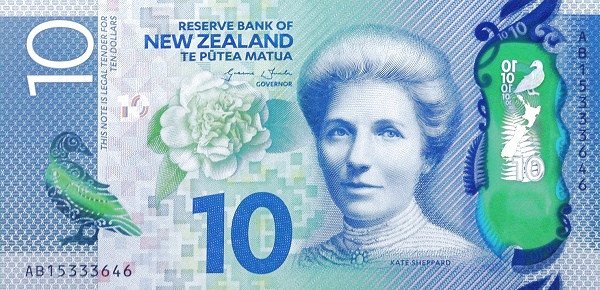NZD/USD Suffers as Fed is Cautious and Geopolitical Tensions Rise: Can China’s Stimulus Rescue the Kiwi?
The NZD/USD currency pair continues to suffer from downward pressure for a third consecutive session as slight US Dollar strength takes its toll on the Kiwi. The Federal Reserve’s position of offering no more than two rate cuts this year, together with continuing geopolitical tensions in the Middle East and Eastern Europe, has contributed to safe-haven flows towards the Greenback. Though these forces temper the NZD’s outlook, positives surrounding China’s latest stimulus efforts provide some respite to the antipodean currency. Still, without high-profile US economic data releases, traders might still be cautious, waiting for more definitive signals before establishing a reversal in the NZD/USD trend. KEY LOOKOUTS • The US Dollar continues to be supported as markets absorb the Fed’s expectation of just two rate reductions by year-end. • Safe-haven demand for the Greenback continues to be fueled by ongoing Middle East conflicts and Russia-Ukraine war, putting pressure on NZD. • Hopes for China’s recent stimulus efforts may provide near-term support to the Kiwi and other antipodean currencies. • Weak US economic data may result in defensive trading, with investors waiting for a clear trend reversal in NZD/USD. The NZD/USD currency pair is under pressure against a mildly firm US Dollar, fueled by the Federal Reserve’s conservative approach towards interest rate reductions and persistent geopolitical tensions. The safe-haven demand for the Greenback is supported by ambiguity over global wars, especially in the Middle East and Eastern Europe. Nevertheless, hope over China’s newly proposed stimulus packages provides a possible safety net for the New Zealand Dollar, capping further losses. Without major US economic data, market players will resort to a wait-and-see strategy, awaiting clearer signs before affirming a directional change in the NZD/USD trend. NZD/USD continues to struggle for the third consecutive day against the backdrop of modest USD appreciation and increasing geopolitical tensions. Nevertheless, China’s stimulus optimism might serve to confine losses for the Kiwi to a smaller extent. Traders now look for clearer signs before affirming any significant trend change. • NZD/USD is down for the third day in a row, showing ongoing Kiwi weakness in the face of moderate US Dollar firmness. • The Greenback takes support from the Fed estimating only two 25 bps interest rate reductions by the end of the year, enhancing safe-haven demand. • Fed Chairman Powell’s remarks regarding slowed inflation gains and retaliation tariff fears further buoy the Greenback. • Middle East geopolitical tensions and the Russia-Ukraine conflict remain key drivers of demand for the safe-haven USD. • Recent stimulus in China provides some resilience to the New Zealand Dollar, preventing deep declines. • Traders’ restraint due to absence of key US economic data releases keeps them in wait-and-watch mode for more robust cues to take aggressive positions. • Sentiment in markets remains contradictory, with USD strength potential limited by fears of tariff-induced US economic slowdown. The NZD/USD currency pair remains under pressure as general economic and geopolitical considerations shape market sentiment. The US Dollar is supported by the Federal Reserve’s conservative stance towards interest rate reductions, with policymakers only forecasting two cuts this year. Further, comments by Fed Chair Jerome Powell on potential delays in meeting inflation targets due to global tariff retaliation have contributed to the Greenback’s strength. Meanwhile, continued geopolitical tensions, including Middle East tensions and the ongoing Russia-Ukraine war, have increased the need for secure assets such as the US Dollar. NZD/USD Daily Price Chart Chart Source: TradingView Conversely, some of the New Zealand Dollar’s positive momentum is coming from China’s newly announced economic stimulus policies. As a key trading partner for New Zealand, China’s economic outlook plays a crucial role in shaping the Kiwi’s performance. The stimulus efforts are expected to boost economic activity, indirectly benefiting export-driven economies like New Zealand. While these global dynamics continue to unfold, traders are closely monitoring market developments, waiting for stronger signals to determine the long-term direction of the currency pair. TECHNICAL ANALYSIS NZD/USD is appearing to suffer from chronic weakness as it is not able to maintain above crucial levels of support, and new selling pressure is seen near the mid-0.5700s. The pair’s failure to hold a bounce back from the 0.5720–0.5725 area indicates that downward momentum is still intact. The markets are eagerly observing for a firm break below this area of support, which might pave the way for more downside. However, any attempt to recover is threatened by the prospects of sellers cropping up in the 0.5780–0.5800 area, unless there’s a very good bullish stimulus shifting sentiment. FORECAST Any shift in the sentiment towards the riskier assets or a decline in the strength of the US Dollar as a result of the dovish inputs from the Fed or disappointing economic reports might result in NZD/USD recovering. A continued advance past the 0.5780–0.5800 resistance level might indicate fresh buying interest and carry the pair toward the next resistance around 0.5840. Improved Chinese economic news or better-than-anticipated New Zealand data might serve as a further catalyst for further pair upside action. On the negative side, sustained US Dollar strength, ongoing geopolitical tensions, or poor market confidence may continue to keep the NZD under strain. A fall below the 0.5720 support level may initiate further losses, setting the stage for a drop towards the 0.5670–0.5650 area. If bearish momentum gathers pace, the pair may even test lower levels not witnessed in recent months, supporting the bearish outlook unless backed by new fundamental triggers.











